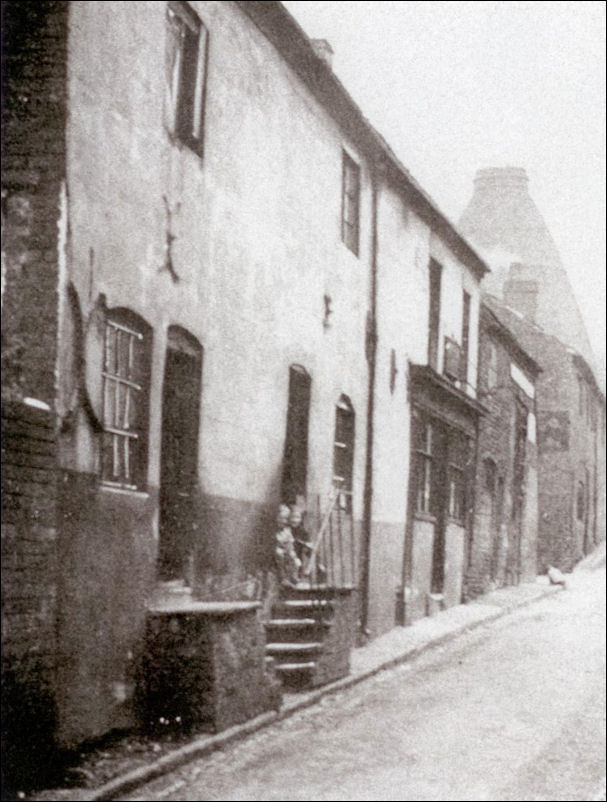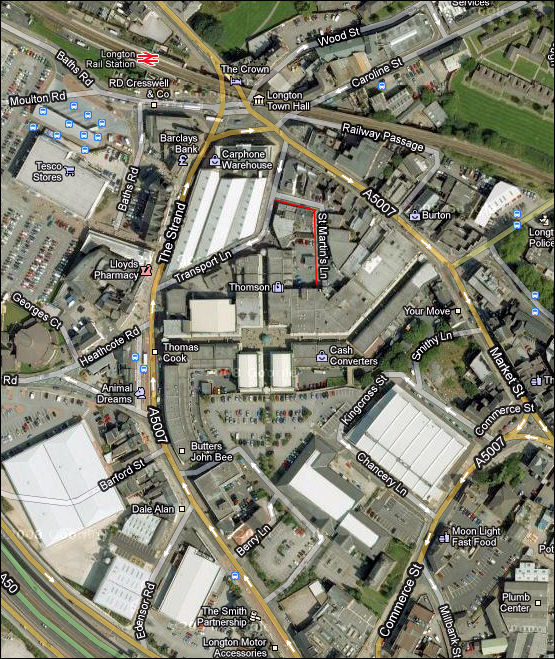![]()
|
|
|
|
|
Stoke-on-Trent - Potworks of the week |
St. Martin's Lane, Longton

St. Martin's Lane, Longton in
the 1930's
"monstrous cones of solid
brick lift their peaked heads above the roofs of the houses"
photo: courtesy of the Sentinel Newspaper
the two buildings on the right were pubs
the King's Arms and the Staffordshire Knot Inn
|
"Even in the 190's,
some pottery workers still lived in small insanitary houses under the
shadow of the factories and bottle ovens. This typical scene, long
vanished, was in St. Martin's Lane, Longton. One visiting writer
described it as "Victorian industrialism in its dirtiest and most
cynical aspect"
"The aspect of the streets and thoroughfares of Stoke is anything but attractive to a stranger, presenting more the appearance of a fourth-rate London suburb than a town of business.
Longton.
or Lane End... is perhaps the most characteristic town in the whole of
the Pottery district. It is, as the name implies, a very long town, and
is undoubtedly the most crowded, and if we are to judge from outward
demonstrations, the least polished locality in the whole borough.
It is by the exertions of the Longton potters that the working-man and the cottages are enabled to set a china tea-service on their tables, brilliant in colours and gold, at a cost we must not name but which the humblest house-keeper can contrive to pay. An immense quantity of the low-price English china, as well for exportation as for home consumption, is here manufactured weekly,..."
from a 1850's weekly magazine "The Leisure Hour - a Journal of instruction and recreation" June 1853 |
St. Martin's Lane, Longton on a 1898 map
the proliferation of bottle ovens situated right in the middle of Longton town centre can be seen on this map

St. Martin's Lane, Longton -
Google maps, 2011
St. Martin's Lane survives as an access to the car parks behind
the shopping precinct which has replaced the pottery factories
|
Related pages The Baddeley family of potters operated a umber of potteries, including in St. Martin's Lane, Longton. Lane End was centred on the area around Market Street and the bottom part of Anchor Road and contained the Markets, Churches and main potworks. also see.. Advert
of the Week
|